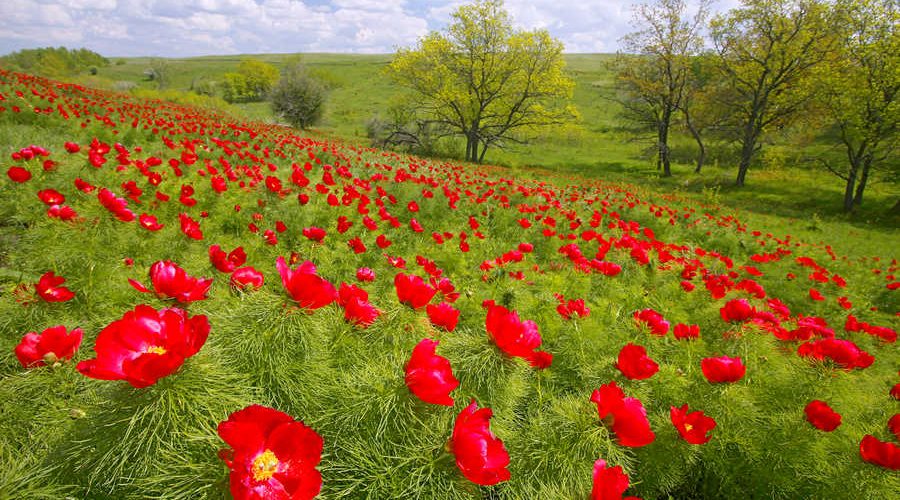In Russia, you can find a large number of plants. Some of them are on the verge of disappearance, therefore, they are included in the Red Book.
Contents
- Red Book Plants of Russia: Description and photo
- The half -wire lake
- The Half -School of Asian
- The snowdrop is flat -headed
- Volodushka Martyanova
- The non -rejuvenate is cheerful
- Rhododendron Schlippenbach
- Tulip dwarf
- Magnolia is backward
- The figs are ordinary
- Aistnik Steven
- Seduka Malyshev
- The action is smooth
- Mongolian nut
- Grenade is ordinary
- The almonds are cherry
- Ryabarnik Sumakholid
- The lotus is nutty
- PION Mountain or Spring
- Mack Vostochny
- Buttercup Sayansky
- The violet is cut
- Ginseng is ordinary
- Marsilee Egyptian
- The bunny is simple
- Mecodium Wright
- The juniper is high
- Little larger Olginskaya
- TIS berry
- Microbiota cross -parked
- Pine is thick -flowered
- The juniper is solid
- Lobaria pulmonary
- Japanese glossodium
- Yellow water lily
- Shafran is beautiful
- Belladonna
- ANEMOSTRUMEM Perm
- The bell is dolomite
- Khuna Kuna
- Cleiton clean
- Gibraltar Smolevka
- Cokio
- Frankclinius Alatamakh
- Barguzinskaya wormwood
- Large shoe
- Kandyk Siberian
- Lilia Saranka
- The heather is ordinary
- Bloponous pools
- Rodila is pink
- Palcato -root is spotted
- High gastrium (puzatka)
- Beauty yellow
- Sternbergia Colchicoma
- Eremosparton Skeys
- Video: Red Book Plants
From this article you will learn which plants are included in the Red Book, as well as where they are found.
Red Book Plants of Russia: Description and photo
The half -wire lake
- The half -wire lake - this plant belongs to the category “under the threat of disappearance”, and is listed in the Red Book of Russia. It grows in water, at a depth of at least 4 m. A short stalk of spherical shape reaches a diameter of 2-3 cm.
- Buffin leaves are characterized by a dark green tint. Each bush has about 30-70 leaves. The length of each sheet is 20 cm, and the diameter is only 3 mm.

The Half -School of Asian
- The Asian half -spite is growing on Sakhalin, in the Primorsky Territory and Kamchatka. Prefers to "live" on silty soils. The tuber stem, consisting of 2-3 blades, is immersed in the ground.
- Excose -shaped leaves, straight. Their length can reach 15-40 cm. The leaves are green, but slightly lightened at the base.
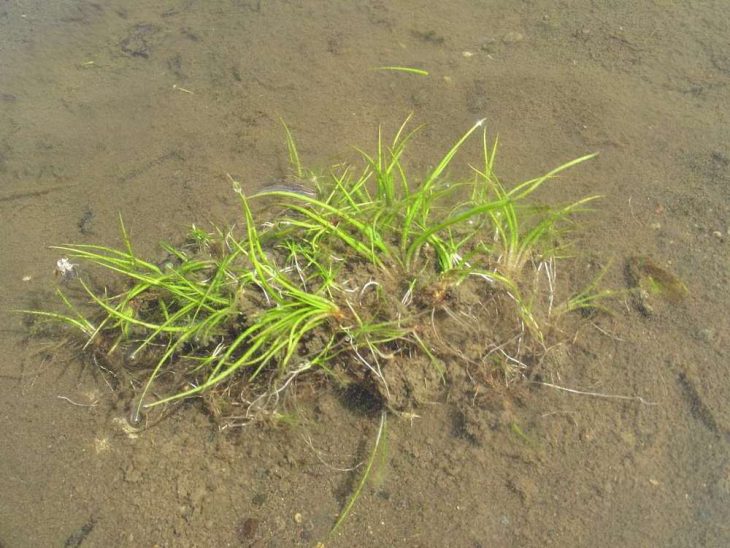
The snowdrop is flat -headed
- Most often, this plant, listed in the Red Book of Russia, is found in the Caucasus and in North Ossetia. The average height is 15 cm. The bulbs can reach a diameter of 3 cm. The leaves are long, flat. They are characterized by a dark green tint.
- At the beginning of flowering, the peduncle reaches 20 cm in length. After it blossoms, it will reach a diameter of 22 cm. The peculiarity of a flat -leaved snowdrop is that it may have external and internal leaves. The latter reach the maximum length of 7 mm.

Volodushka Martyanova
- This plant can be found only in Russia. It is most often found in the Altai Territory and in the Sayan. The average height of the bush is 50 cm. Some specimens can reach 70 cm.
- The leaves are dark green, thin.
- Flowering is observed in early summer. Bright yellow flowers appear on the bushes.
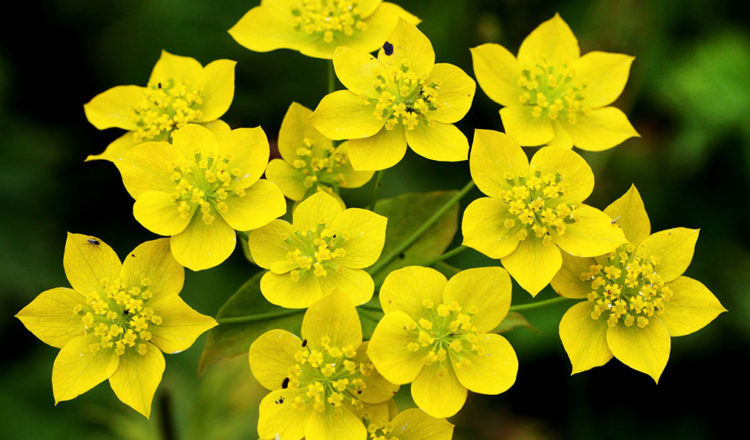
The non -rejuvenate is cheerful
- This plant from the red book grows only in the Caucasus. Prefers forest glades. Despite the toxicity of the miserable of a cheerful, it is often torn to form bouquets. This is precisely the main reason for the reduction in the number of plants.
- Flowering of the non -time fun begins in the fall. The flowers are quite large. They have the shape of a funnel. The flowers are characterized lilac color. The composition of the leaves and flowers of the plant contains a substance called colchicin. It is able to provoke burns on the skin.
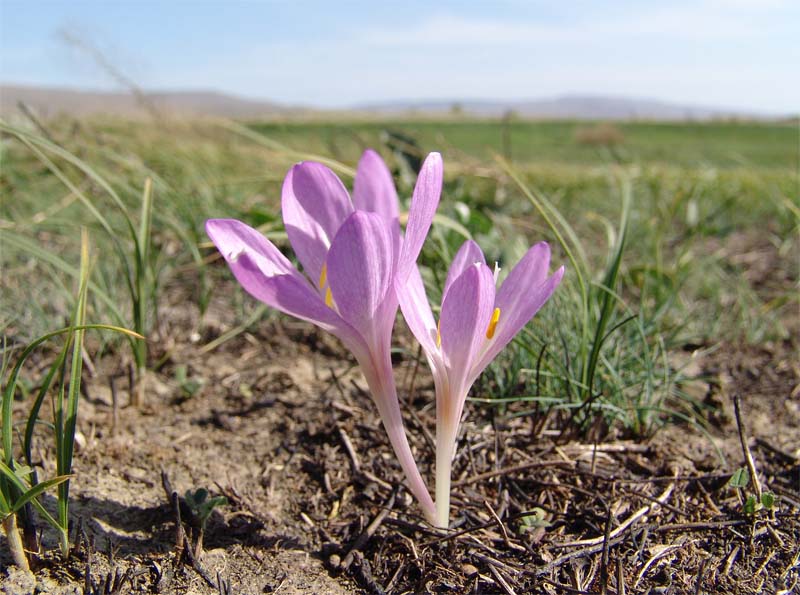
Rhododendron Schlippenbach
- This plant grows in the Far East, on mountain rocky slopes.
- The height of the rhododendron of the Schlippenbach at least 2 m. Saturated green leaves are formed on the bushes in the form of paws in an amount of 5 pcs.
- Oval -shaped leaves change their shade in the fall, and become yellow. Flowers in the form of a bell have a purple-pink tint. Their diameter is about 8 cm.
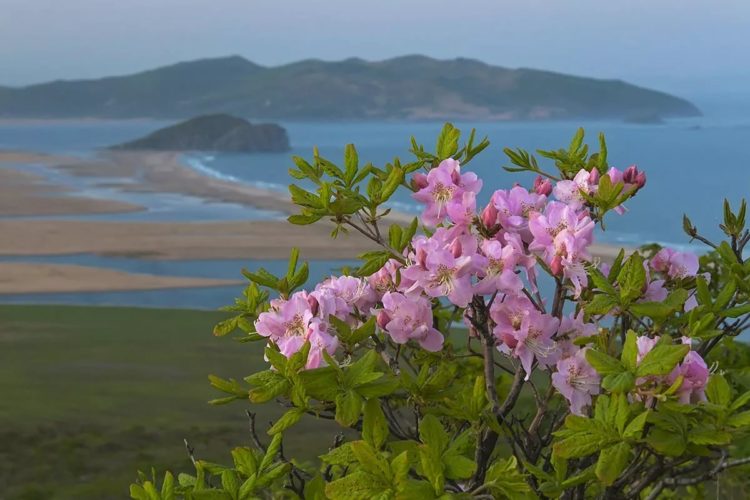
Tulip dwarf
- This plant is recorded in the Red Book of Russia, because it is on the verge of disappearance. The tulip is growing in mountainous areas, at an altitude of 2.5 km above sea level. The height of the tulip is about 10 cm. The bulb is compact, up to 2 cm in diameter.
- Each bush has no more than 3 linear leaves of silver-green color. The bell -shaped buds bloom in early May. The dwarf tulip is represented by many varieties that differ in the coloring of buds.


Magnolia is backward
- Magnolia backward is a tree, the height of which is about 30 m. The barrel reaches a maximum diameter of 65 cm.
- On the trees, light green buds are formed, about 9 cm long. The leaves are large, up to 40 cm in length, and 20 cm in width.
- Chalosy flowers are characterized by a white or cream tint. Their maximum diameter is 18 cm.
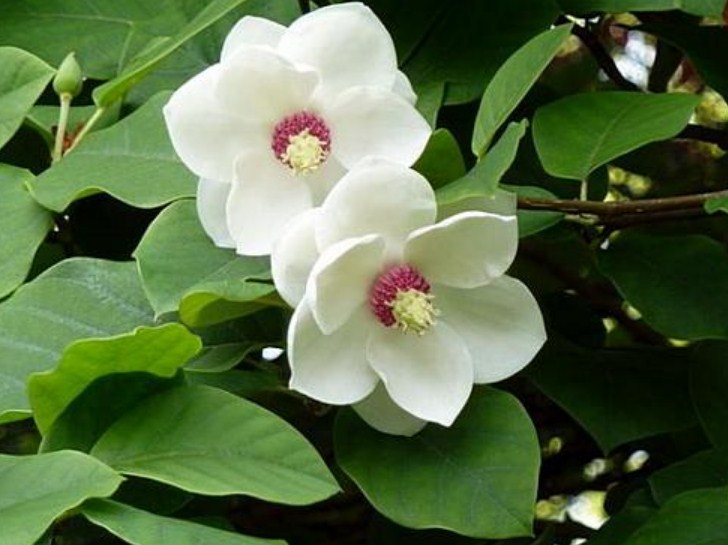
The figs are ordinary
- This plant is common in Crimea, Transcaucasia, and in the Caucasus. This is a woody plant that botanists are attributed to the tutov family.
- Ordinary figs is characterized by what has vypower flowers. Female characterized pear -shaped form, and men's - flattened. After pollination, fruits are formed.
- The nozzle is covered with a thin peel, on which you can notice a large number of hairs. Most often there are nuts of a yellowish-green shade.
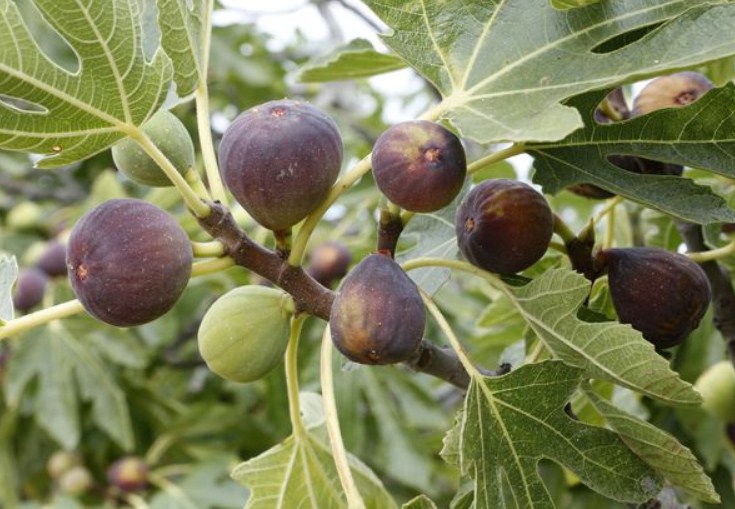
Aistnik Steven
- This rare plant is found in the Krasnodar Territory, in North Ossetia and in the Stavropol Territory. The height of the bush is about 40 cm. Flowering occurs throughout the summer.
- Obligated and crossed leaves have a back-placental shape. They are characterized by a bright green tint.
- The flowers consist of 5 lilac petals. Their length is about 1 cm. The fruits have the shape of a box, and their length is about 6 mm.

Seduka Malyshev
- This plant is on the verge of disappearance, so it was included in the Red Book of Russia. It grows only in Russia, in particular, in Eastern Siberia.
- The shoots located above the surface of the Earth are characterized by scaly vagina. They have a brown color, with a small purple reflection.
- Green leaves, about 3 mm wide. The shoots are smooth, about 2 cm in diameter. There are two types of spikelets on the bushes - stamens and pestle.

The action is smooth
This plant is entered in the Red Book of Russia, and is protected by the government. The shrub is deciduous or branched, depending on the place of growth.
Description of the action smooth:
- The leaves of the opposite type.
- The shoots are red or brown, with a porous bark.
- The appearance of the flowers resembles a bird cherry, but, a little smaller in size.

Mongolian nut
- This plant is found in Russia, Mongolia and China. Mongolian nut (karyopteris) is a small shrub whose height is only 50 cm.
- There are several species on the bushes - supportive, lanceolate or sitting. The flowers change their color, depending on development. While they form a bud, have a blue hue. After they acquire purple.
- The fetus consists of 4 nuts having a winged shape. It gives the plant an unusual smell of essential oils.
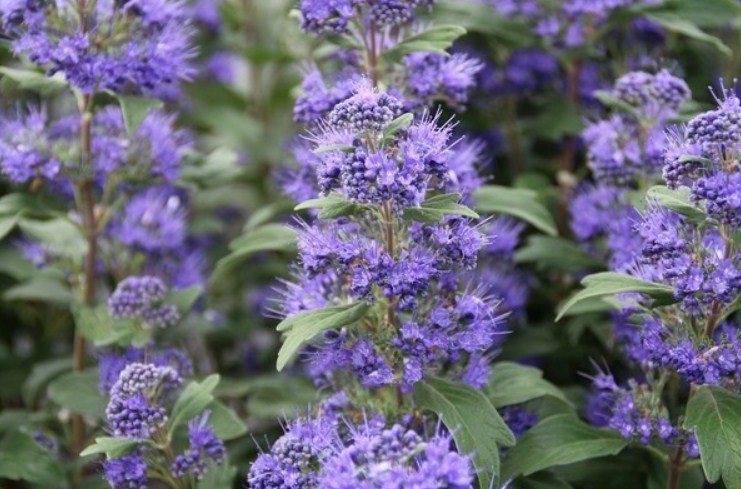
Grenade is ordinary
- This plant grows in conditions of subtropics. It is found in Crimea, in Transcaucasia, in Georgia, Iran, Turkey and Abkhazia. Often you can find ordinary grenades in Azerbaijan, India and Southern Armenia.
- The height of the bush or wood rarely exceeds 5 m. The strong branches are very prickly, which complicates the process of harvesting. The leaves of the opposite type are lanceolate. Their length is about 8 cm, and the width is 2 cm.
- Bright red flowers reach a diameter of 3 cm. Fruits are spherical or elongated. Their color can be red or brown. The average diameter of the fetus is 15 cm. Inside each grenade, there are more than 1 thousand seeds.

The almonds are cherry
- Most often, the cherry almonds are found in Siberia, in Mongolia and Buryatia. The height of the shrub is about 1.5 m. The leaves are long, oval. Their width rarely exceeds 1 cm.
- Pink flowers have a wide -round shape. Their diameter is not more than 3 cm. Ovoid fruits have a slight puberty. At least 600 fruits can form on each shrub.
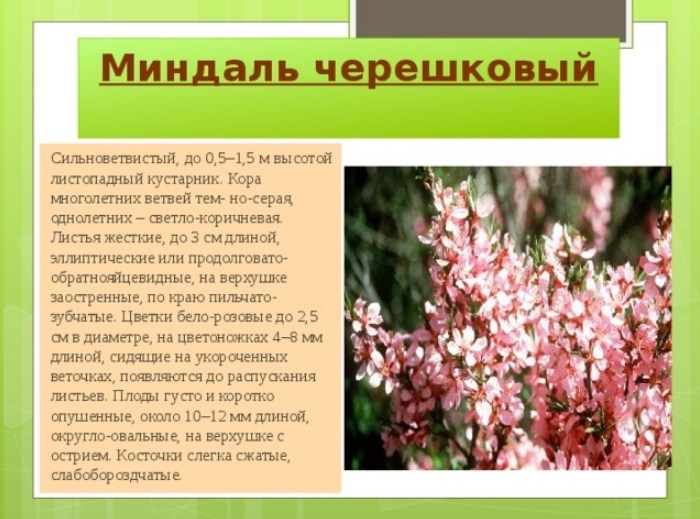
Ryabarnik Sumakholid
- This rare plant is found only in Russia. It can be found in Khabarovsk and Primorye. It prefers to grow on rocky slopes, rises to 1000 cm.
- Ryabinnik Sumakholitny is characterized by bisexual large flowers, the width of which is about 1.5 cm. The flowers have a light pink tint, and they are collected in compact panicles.
- The plant blooms in the middle of summer, and begins to bear fruit with the fruits of leaflets in August or September.
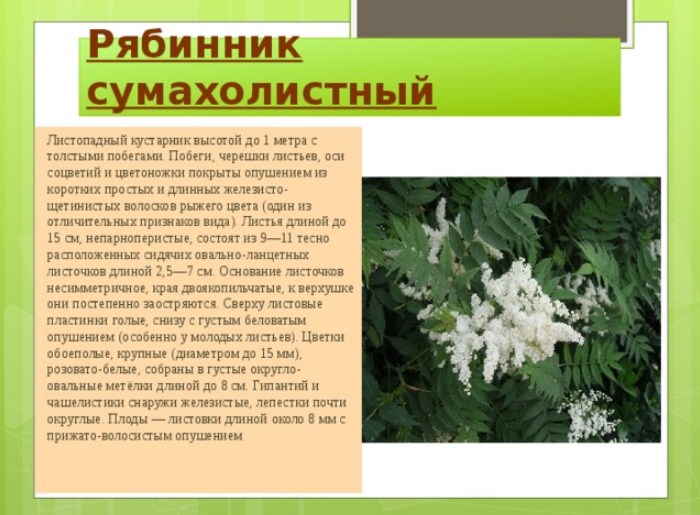
The lotus is nutty
- This rare plant grows, mainly in water. It can be found in India, in the Kuban, in the Far East or in the lowlands of the Volga.
- Dolo -bearing lotus can be several types - floating or air. The leaves are characterized by a saturated green tint, regardless of the variety of the plant.
- Flower flower. It is fixed to a large peduncle, the diameter of which is about 30 cm. The shade of the flower can be white or bright red.
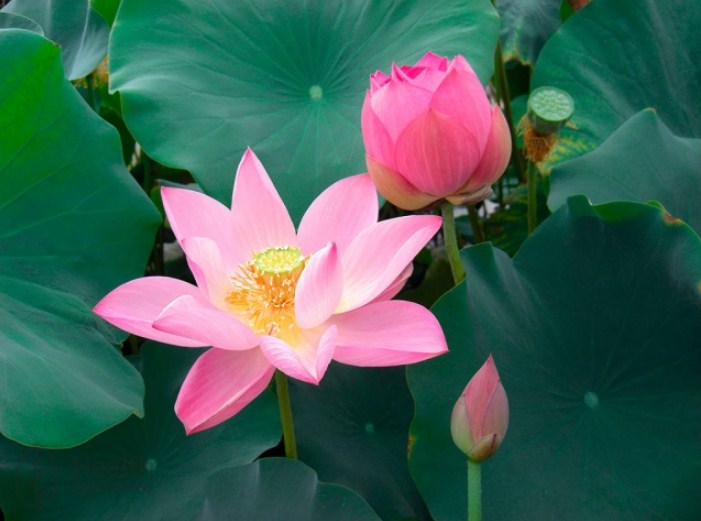
PION Mountain or Spring
- This rare species of plants is found only in Southern Primorye. Gorky peony is characterized by excellent frost resistance, so it tolerates severe frosts in winter. The bush consists of one erect stem, the height of which is about 50 cm.
- The plant is characterized by the presence of ribs along which a purple pigment strip flows. The leaves of oval shape, about 20-25 cm long.
- The leaf plate has a rich red pigment. The diameter of one flower is about 10 cm. The stamens are formed in the inside of the flower. Their number reaches 60 pcs. Culture blooms in May.
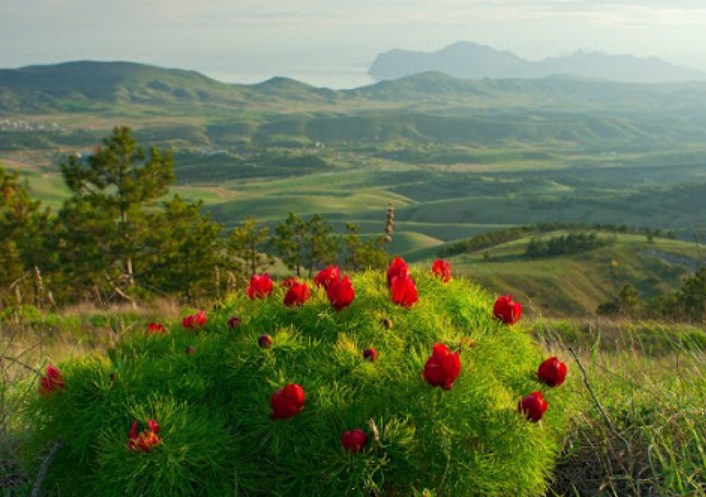
Mack Vostochny
This plant is known to everyone, even those who have never been fond of botanical. East poppies grow in the Caucasus, in Iran, in Turkey and Georgia.
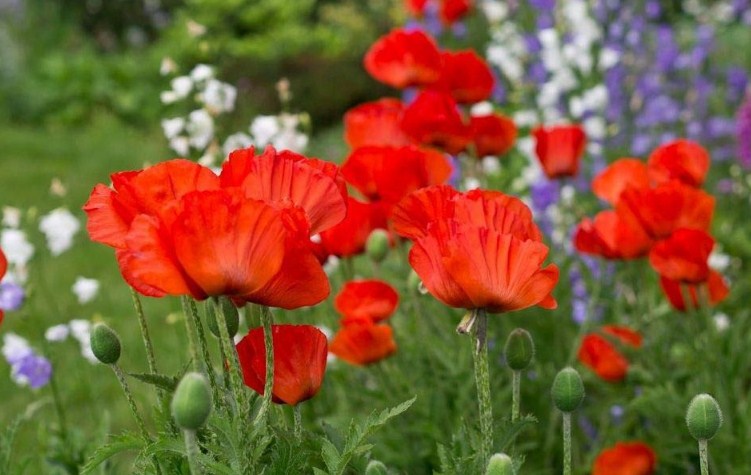
Plant description:
- the height of a direct and thick stem reaches 50-80 cm. A small amount of snow-white bristles forms in the lower part;
- the length of the leaves reaches 30 cm;
- the pedunks are characterized by a white shade, and their length is about 30 cm;
- egg -shaped buds grow up to 3 cm in length;
- on each flower, up to 3 cups are formed;
- long -sized corolla have a scarlet shade;
- culture blooms in early summer.
Buttercup Sayansky
- This rare species of plants is found exclusively in Russia. It can be seen in Siberia and Buryatia. The population of the plant is reduced, because the grazing of livestock increases and the mining industry develops. The height of the plant is not more than 27 cm. The stems are characterized by a curved shape. The upper part of them is covered with pile.
- The Flowers of the Sayansky Buttercup are different species - basal and stemovim. Flowering is carried out with bright yellow flowers, the diameter of which is not more than 2 cm. Oval or spherical fruit heads form small fruits. Flowering occurs in the summer, and fruiting with the onset of September.
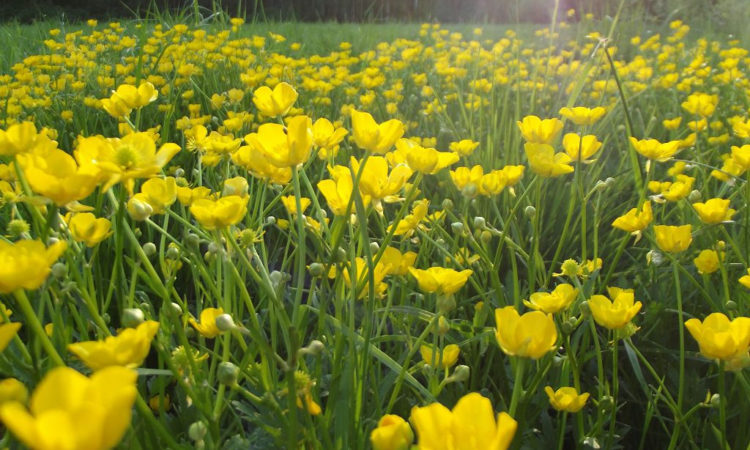
The violet is cut
- This plant is at risk of disappearance. It is a dusk bush, the height of which is about 3-6 cm. Short rhizomes turn into white root.
- Straps have a broad -balance sheet, and cups are oval. The latter reach a length of 3 mm. Venels are characterized by a purple tint.

Ginseng is ordinary
- This is a perennial plant, whose life cycle is about 70 years, grows in Russia. It can also be found in China and Korea. The height of the ordinary ginseng is about 50 cm. 2-3 sheets are formed on each bush, which are attached to short petioles.
- Each umbrella is formed from 5-15 bisexual flowers. The whisk is characterized by a white or light pink tint. Fruits are red berries. Flowering is carried out in early summer, and fruiting in August.

Marsilee Egyptian
- This type of plant belongs to the protected, because it is on the verge of disappearance. It is found in Egypt, Russia, Kazakhstan and China. Most often it can be found in the lowlands of the Volga and Astrakhan. The height of the Egyptian Marseilles is about 10 cm.
- Small leaves, which are called Vaiya, depart from the root part. The leaves have backward form. Sporocarpy quadrangular with stupid edges. Disputes are formed in July or August. They have a spherical shape.
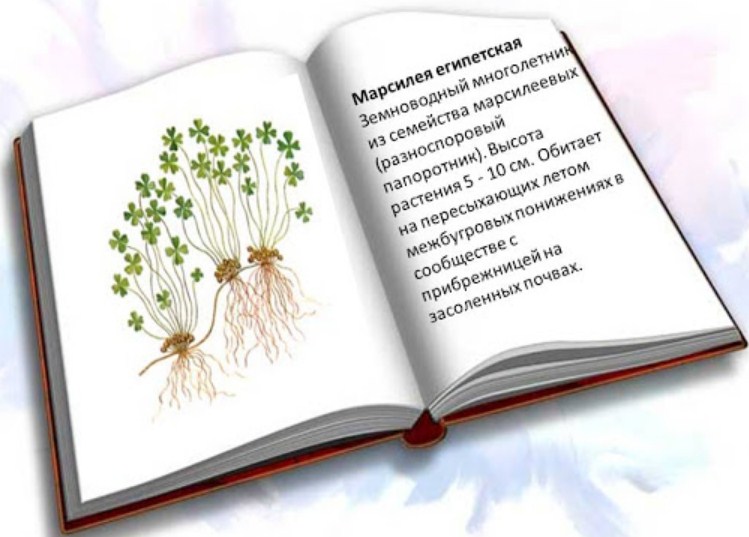
The bunny is simple
- In a large number of many years of fern is found in Russia. However, it can also be seen in Northern Europe and America. The height of the plant is about 15 cm. The rhizome is short, but it contains a lot of juice. The leaves grow slowly.
- On the rhizome you can notice leaf scars. By their number, the age of the plant is determined, because each of them is formed once a year.

Mecodium Wright
- A rare fern Mekodium Wright is growing in Russia. It can be seen in the Primorsky Territory, on Sakhalin and Iturile. The fern is also growing in China, Japan and North America.
- On each bush there are 2-cm petioles that fix Vaii. They can change their shade from green to dark ogo. Sorouses are characterized by a rounded shape, and about 1.5 cm long.

The juniper is high
- An evergreen juniper high grows to 15 m high. It is found in the Crimea, in the Caucasus and in the Balkans. Crohn's pyramidal. The bark has a dark gray shade. The branches are thin, brownish.
- On trees, numerous bright green leaves are formed, which have an oval shape. On a high juniper, spherical berries are formed, the diameter of which is about 10 cm.
- They have a violet-black shade, with a small amount of snow-white plaque. In each fruit, there are about 8 seeds that have an egg -shaped shape.

Little larger Olginskaya
- The overwhelming amount of Olginskaya larch, which is on the verge of extinction, is found in the Primorsky Territory. It can also be seen in the northeast of China and in North Korea. The height of the tree does not exceed a mark of 30 m. The diameter of the barrel is about 80 cm.
- The needles of the larch Olginskaya reaches a length of 3 cm. It has a narrow shape, and is characterized by a dark green tint. On the trees you can see ovoid cones, up to 3 cm long. When they open, they reach 3.5 cm. Each bump has 30 scales, which are located in 5 rows.
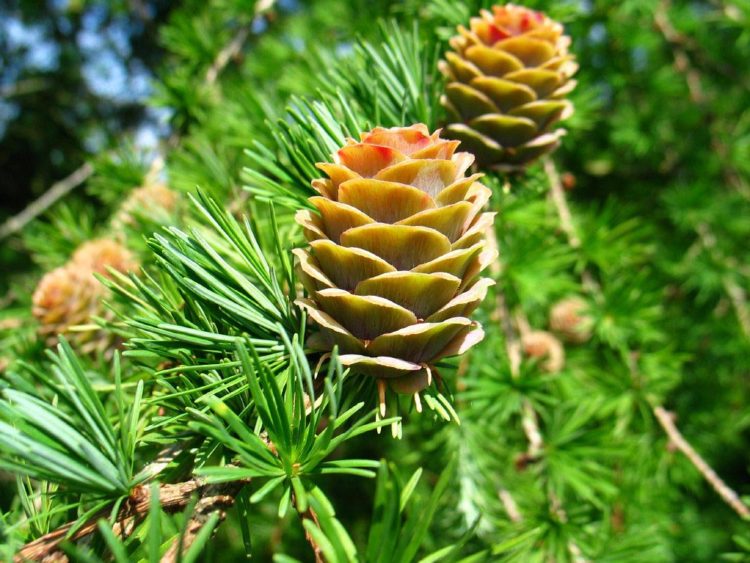
TIS berry
- This rare tree grows in the Crimea and the Caucasus, and is protected at the legislative level, because it is on the verge of disappearance and entered into the Red Book of Russia. The life expectancy of a tree is from 2 to 4 thousand years. The height of the plant is up to 20 m. The diameter of the trunk can reach 1.5 m. A cylindrical crown, consisting of several peaks.
- The tree is covered with a reddish-gray bark that has no roughness. Oval buds have a light brown tint, and scales often form on them. The length of the needles is 3.5 cm, and the width is 2.5 mm. There are pollen cones in the sinuses. Seeds are characterized by a brown tint and oval shape.
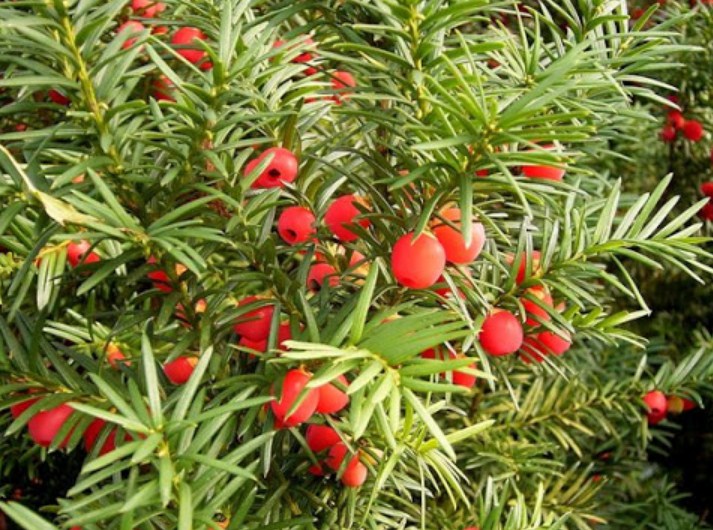
Microbiota cross -parked
- The cross -feline microbiota grows in the Far East and Siberia. The height of the shrub is about 50 cm, and the diameter of the crown can reach 5 m.
- The coniferous is characterized by a rich aroma that is activated when rubbing in the hands. Young shoots are characterized by needle needles, and the elders are scaly. In summer, the needles have a rich green hue, and in winter - brown with a copper tint.
- The color of the bark depends on the age of the bush. Young plants have a green crown, and adults are in brown-scarlet. On shrubs, spherical cones are formed, consisting of their many layers of scales. Seeds have an oval shape. The cones are formed on a plant that has reached 10 years of age.

Pine is thick -flowered
- This rare type of pine is found in the Primorsky Territory. The shrub is characterized by a spherical or umbrella shape of the crown. The height of the plant is no more than 1 m. The width of the crown can reach 1.5 m.
- The growth rate of the plant is small, only 10 cm per year. The bark is red-brown, scaly.
- The needles of the pine is long, up to 15 cm in length. The width of the needles does not exceed 1 mm. The needles form bundles inside which can be seen ovoid buds. The cones have an oval or cone shape. Their length is about 4 cm.
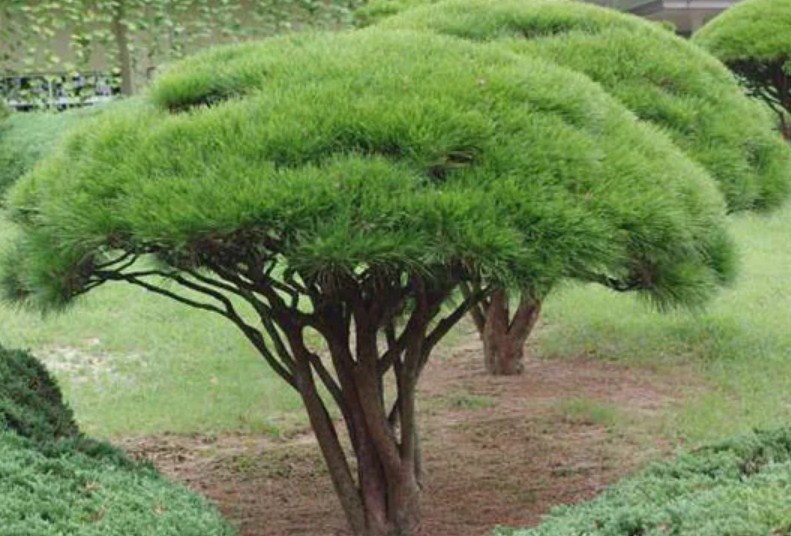
The juniper is solid
- In nature, a solid juniper prefers to grow in the Primorsky Territory, on Sakhalin, and in Kamchatka. The height of the tree is about 10 cm, and the width of the crown reaches 60 cm. The crown has a pyramidal shape.
- The tree is covered with a bark of gray shade. Adult plants are characterized by a red-brown crown. The length of the needles is 3 cm. It can be yellow or yellow-green.
- On the trees, cones-berries are formed, which have a smooth surface, and a blue-black shade. The cones ripen on 2-year-old plants.
- Insurement of 3 faces are formed inside the cones. Their number does not exceed 3 pcs.

Lobaria pulmonary
- Since the air is polluted at lightning speed, the pulmonary lung lung is on the verge of disappearance. It can be found in the south of Russia. The layout of the lobarium reaches a diameter of 30 cm, and the blades grow up to 7 cm in length. Their width rarely exceeds the mark of 3 cm.
- On the blades you can see the chopped edges. The lower part of the pulmonary lung lung has a brown tint.
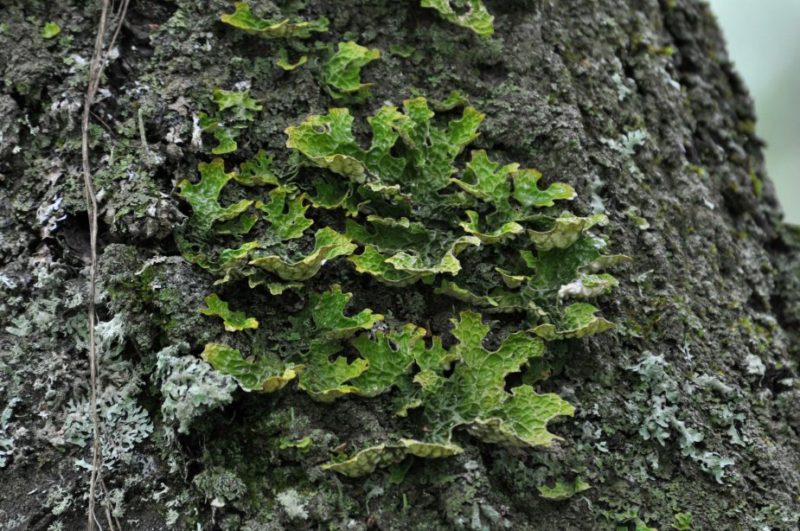
Japanese glossodium
- Most often, the Japanese glossododium is found in Siberia. It also grows in Japan. The structure of the layout is unusual. It has a powder or granular structure. The bushes have a green shade with a grayish reflection. A snow -white plaque is often formed on them.
- Apothetia is small outgrowths that have a fenced shape. The lichen leg is short, up to 2 mm. The upper part of the leg has an linguistic shape, and the lower one is represented by a pinkish-yellow shade.
Yellow water lily
- Despite the rarity of this plant, it is found throughout Russia. Prefers to grow in shallow water. The leaves are formed not only over water, but also under it. Plant flowers are quite compact and have a yellow tint.
- The flowers pass into the box that contains seeds. That is why the jug is also called the "cube."
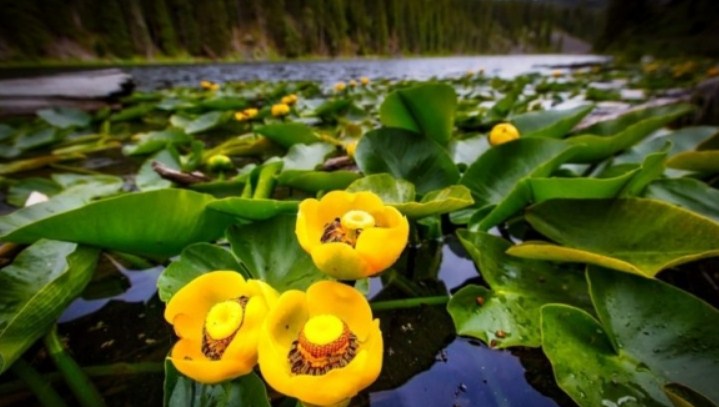
Shafran is beautiful
- This rare plant is found in the Stavropol and Krasnodar Territory. It can also be seen in Dagestan and in Crimea. The onion of the plant is quite developed. It reaches 3 cm in diameter. The shells on the bushes are membranous, and break down into rings. The height of the saffron of the beautiful - about 30 cm.
- No more than 3 leaves are formed on each bush. Their length is 40 cm, and the width is 0.8 cm. They have a rich green hue. The flower of saffron is beautiful yellow. Its length is about 6 cm. The fruit of Safran is the beautiful is a box that contains seeds.

Belladonna
- This plant is quite rare, and is found only in the Krasnodar Territory and the Voronezh region. It prefers to grow on the edges, among other herbaceous plants.
- Dark blue berries form on the bushes, which in shape resemble cherries. It is forbidden to use such fruits in food, because they are very poisonous.
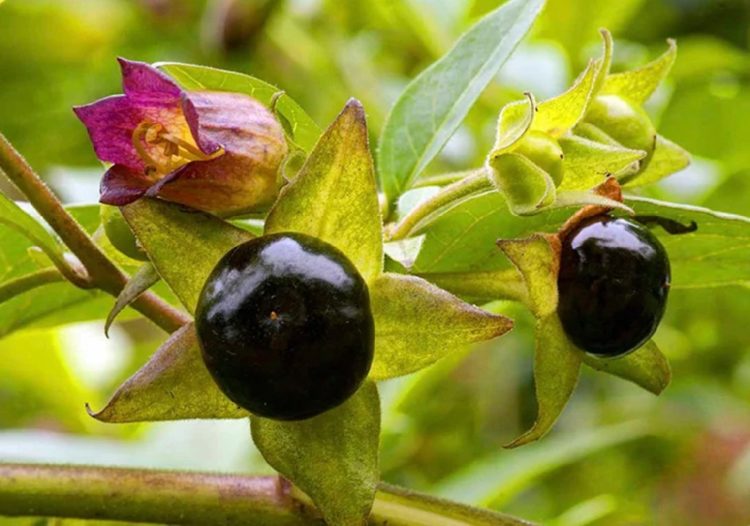
ANEMOSTRUMEM Perm
- This rare plant grows, mainly in the Urals. This is a herbaceous perennial plant, which is on the verge of disappearance, entered in the Red Book of Russia.
- The height of the bush is about 60 cm. There are many small hairs on the surface of the leaves and the stem. The diameter of the flowers is up to 3 cm. The leaves around the flower have a snow -white shade, and an elliptical shape. Fruit length - 0.7 cm.
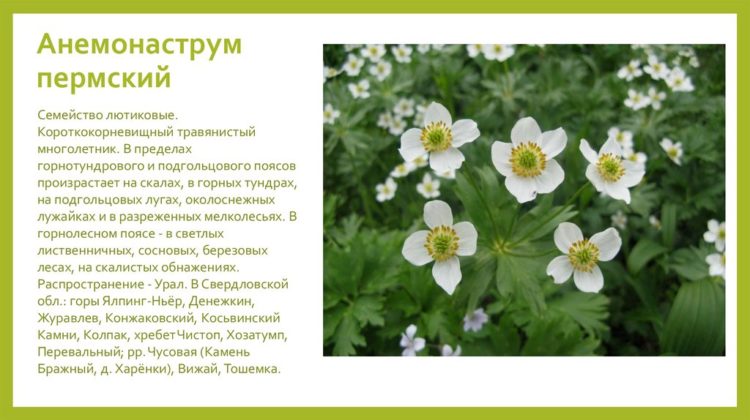
The bell is dolomite
- This rare plant is included in the Red Book of Russia, because it is on the verge of disappearance. It grows only in North Ossetia. Fans of beautiful and rare flowers can see a dolomite bell in Nalchik’s botanical garden.
- The height of the grassy plant is 40 cm. It received such a name, because its flowers look like a bell. They have a snow -white color.
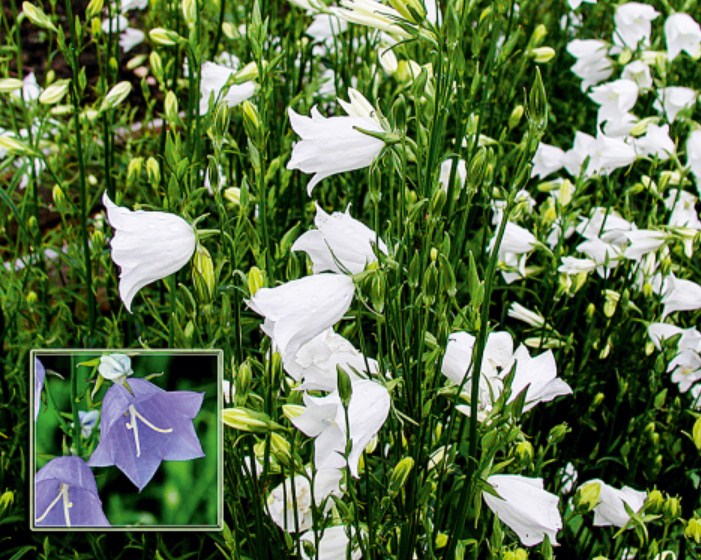
Khuna Kuna
The plant is growing in the south of the Far East. Short description:
- height - 30 cm;
- the leaves are dark green, winter-hardy;
- deciduous petioles-red-brown;
- leaves of leaves - broad -and -itet;
- propagation is carried out by disputes;
- the rhizome is short.

Cleiton clean
- This rare plant can often be found in Russia. It grows in the Primorsky Territory, in the south of the Khabarovsk Territory, in Sakhalin and in the southern Kurils.
- Cleiton is a clean -up of a fern. Plant height - half a meter.
- Little petioles are covered with hairs of a red shade. Outwardly, they resemble a layer of felt.
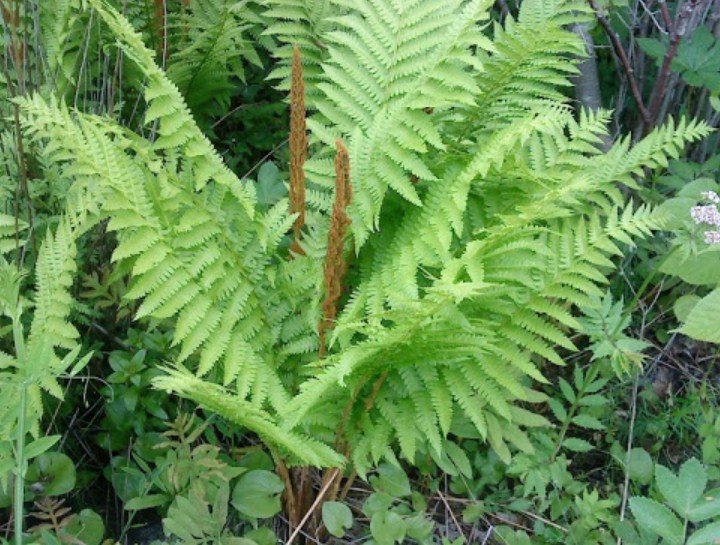
Gibraltar Smolevka
This is a rare plant, which was previously considered completely disappeared. In the 90s of the last century, scientists discovered the bushes of this plant on the slopes of Gibraltar. Now Smolevka seeds are stored in the “Millennium Bank”.
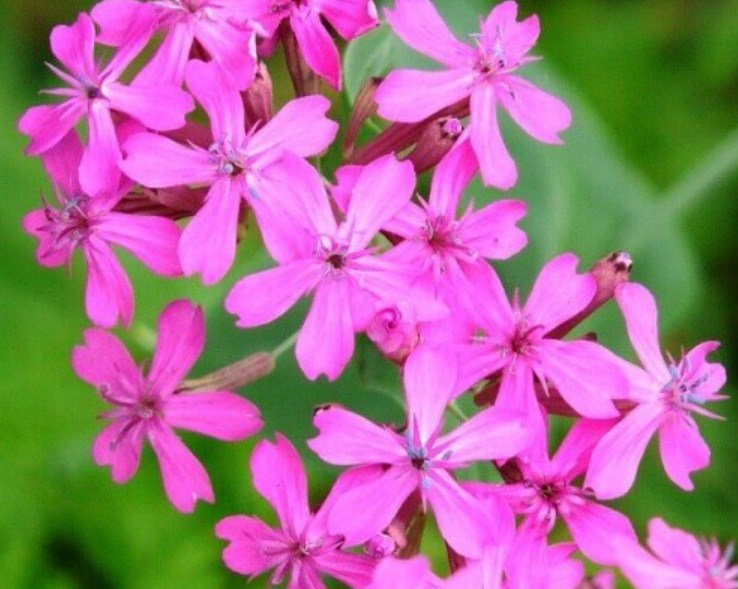
A brief description of the plant:
- branching creeping stems;
- supply leaves of saturated green shade;
- there is a soft pile on the surface of the leaves;
- star flowers have a rich pink shade;
- flower diameter - 3 cm;
- flowers form booby or panicular inflorescences.
Cokio
- This flower grows only on one of the trees in Hawaii. It was first discovered in the 19th century. Now it is on the verge of disappearance.
- The flowers are lonely, located on the pedunks. The skin of the cup is thin, and covered with a large number of dark dots. The whisk is characterized by an orange tint. The width of each petal is 6 cm, and the length is 8 cm.
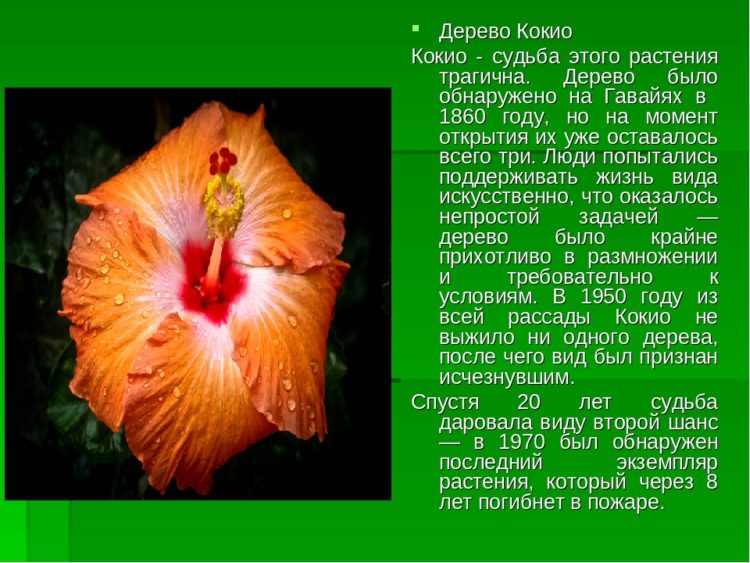
Frankclinius Alatamakh
- At the beginning of the XIX century, this plant was considered completely disappeared. However, after Botaniki, the seeds found it, and planted them in the Botanical Garden of Philadelphia. This brought the result, because the seeds have taken root. Now this plant is protected by an international red book.
- The tree has a pyramidal crown. Its height is up to 10 m. The bark is characterized by a gray tint. Light veins are formed on it in large quantities, which gives the leaf -shaped tree an unusual appearance. Ovoid leaves grow up to 15 cm in length. Their outer part is brilliant, and the opposite is dull, with a gray tint. In autumn, the leaves acquire an orange hue.
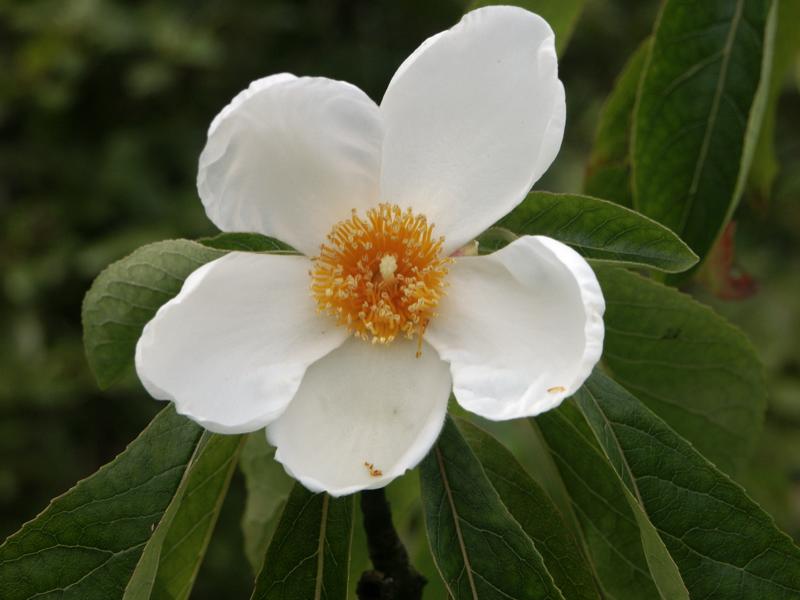
Barguzinskaya wormwood
- Most often, Barguzinskaya wormwood is found in Bashkiria and in the Krasnodar Territory. The height of a perennial plant is half a meter. The stem is covered with a yellowish-green bark.
- Egg -shaped baskets are formed on the bushes, the length of which is 0.5 cm, and the width is 4 mm. The fetus is presented in the form of a seed, inside which seeds are contained. The length of the egg -shaped seed is only 1.5 mm. Barguzinskaya wormwood is a perennial herbaceous plant 40-50 cm high. Flowering of Barguzinskaya wormwood begins in August.
- It is found on the steppe slopes of the hills.
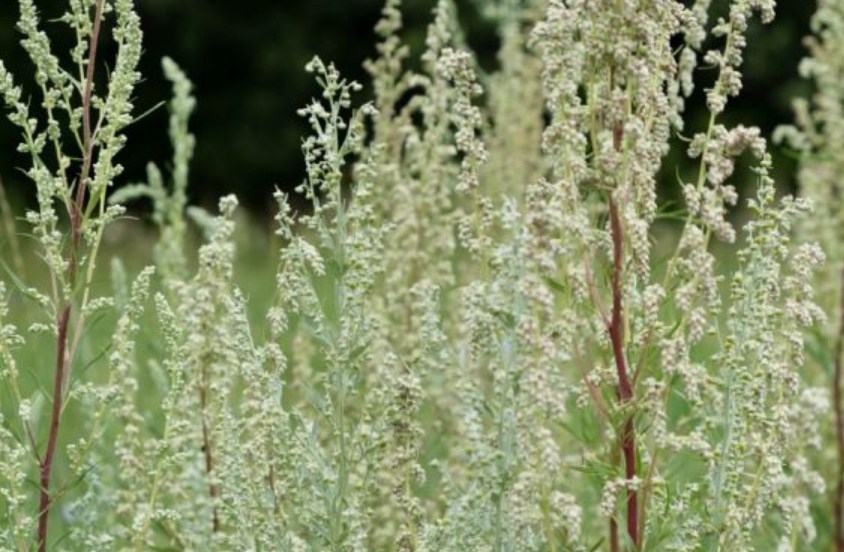
Large shoe
This long -term herbaceous plant is found in Siberia, the Tyumen region, the Altai Territory, in Yakutia and in the Far East.
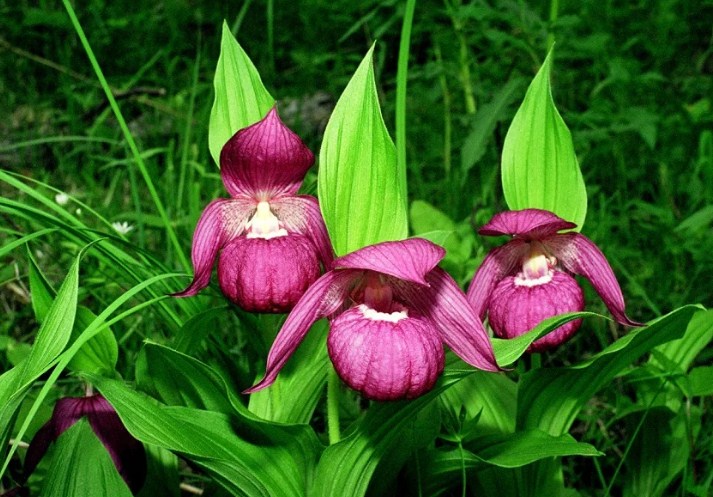
A brief description of the shoe of large -flowered:
- The height of the stem is up to half a meter.
- Elliptic leaves are dark green. Their length is 15 cm, and the width is 4 cm.
- Large flowers reach 10 cm in diameter.
- The shade of flowers is pink, scarlet and snow -white.
Kandyk Siberian
- Perennial grassy plant is found in Southern Siberia. The height of the bush - up to 30 cm. The diameter of the bulb is not more than 1 cm. The leaves are characterized by a brown tint, and an egg -shaped shape.
- The flower consists of 6 petals of a lilac-pink shade. Each flower contains 6 stamens. Flowering is observed in late April. Siberian Kandyk Kandyk was included in 1998.
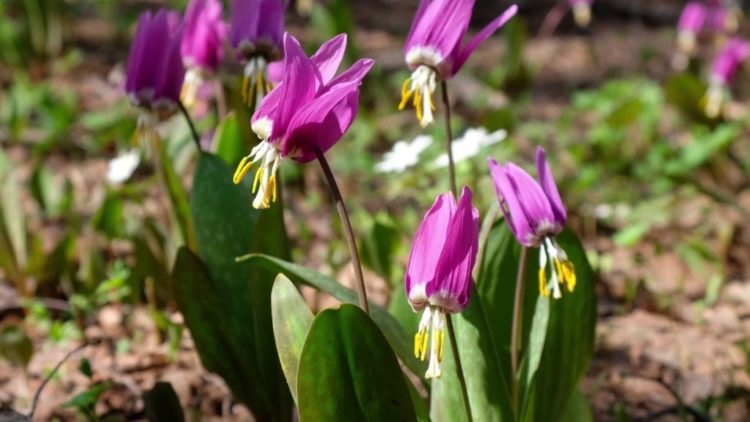
Lilia Saranka
- This perennial plant is found in southern Europe and in Siberia. Prefers to grow on the edges of deciduous forests.
- The maximum height of the locust lily is 0.8 m. Small dark spots can be seen on purple flowers. When the flowers open, a pleasant sweet aroma is felt. Flowering begins in July.
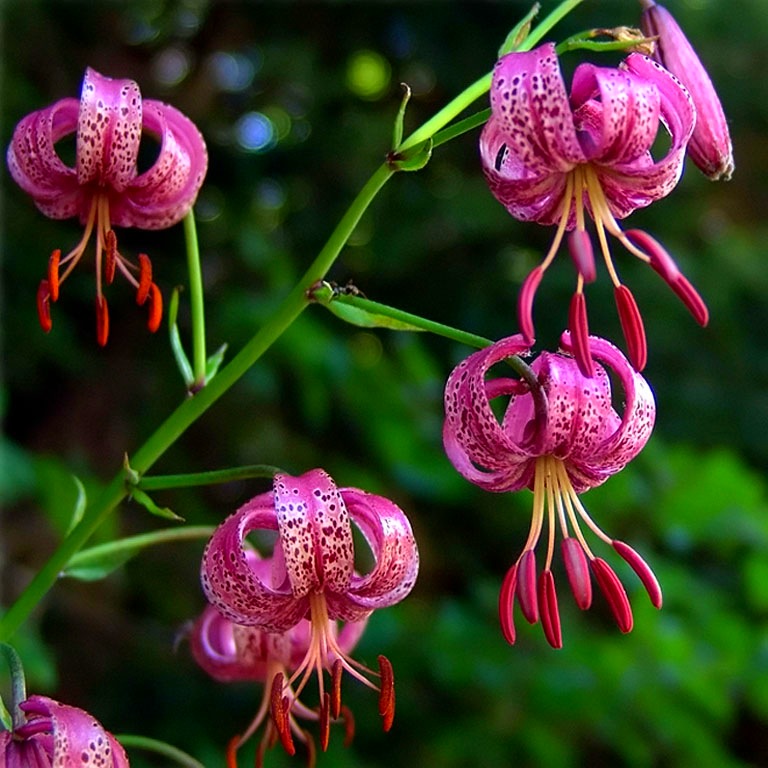
The heather is ordinary
- This evergreen plant is found in the West and in the east of Siberia. The height of the bush is 30-70 cm. There are a large number of small leaves on the branches of the bush.
- The flowers are lilac pink. They are quite small, and have a double perianth. The fetus is a rounded box that is covered with a large amount of light hairs.
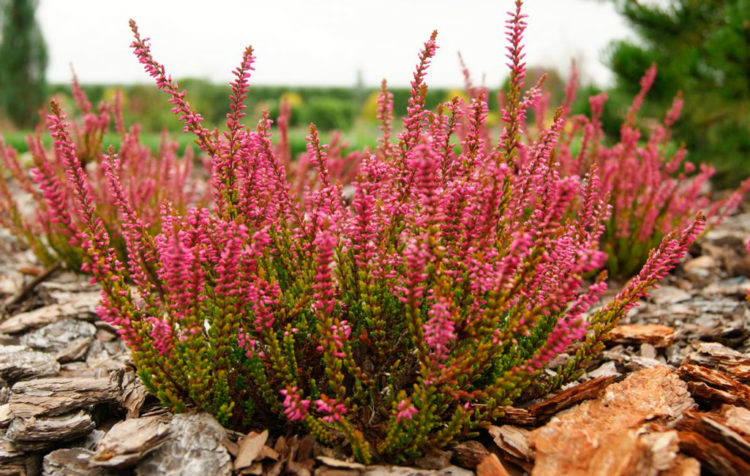
Bloponous pools
- This perennial plant is quite common in Russia. It can be seen in the Smolensk, Kursk, Volgograd and Belgorod regions. The height of the plant is about 40 cm. The stems are dense, thick, so they do not break from the wind.
- The leaves are elongated, covered with a large number of scales. Inflorescences have a spike -shaped shape. Budons are characterized by a purple tint. The unusualness of this plant is in its aroma. It resembles the smell of bugs.

Rodila is pink
- This plant is found in Altai, in the Urals, in Yakutia and in Siberia. It can also be seen in botanical gardens throughout the country. Rhodiola pink is included in the Red Book of Russia.
- Rhodiola pink bushes consist of 10-15 branchy stems, the height of which is not more than 40 cm. The leaves of the elliptical shape have a rich green hue.
- Multi -flowered inflorescences have a yellow tint. Fruits are a multi -leaflet of a green hue. The culture blooms in early summer, and the formation of fruits is observed in August.
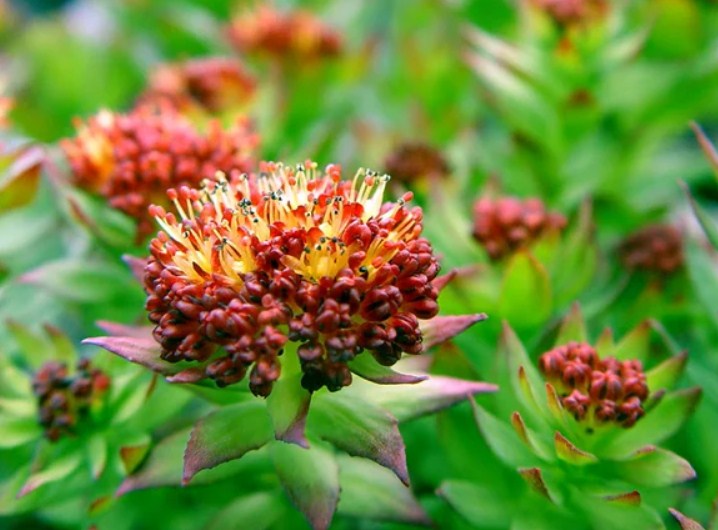
Palcato -root is spotted
- This plant belongs to the orchid family, and is common in the European part of Russia. Inflorescences have a cystic form. Flowering is observed in May.
- With the beginning of flowering, purple flowers appear on the bushes, which contrast beautifully against the background of spotted egg -shaped leaves. The diameter of the flower is 9 cm. The height of the stem rarely exceeds 50 cm.
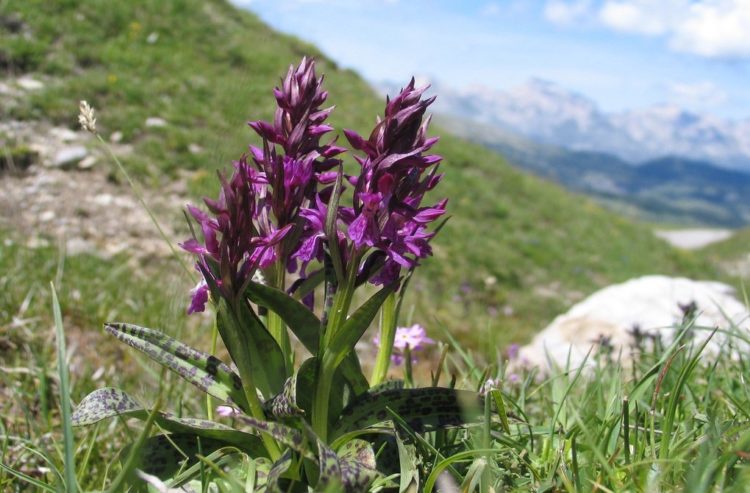
High gastrium (puzatka)
- This is a perennial plant that belongs to the orchid family, occurs in the Primorsky Territory, on Sakhalin and on Kurils.
- The height of branchy stems reaches 1 m. There are no leaves on the bushes.
- The flowers are large, collected in brushes. The diameter of the flower reaches 15 cm. With the onset of autumn, fruits appear on the bushes - boxes, inside of which there are seeds.
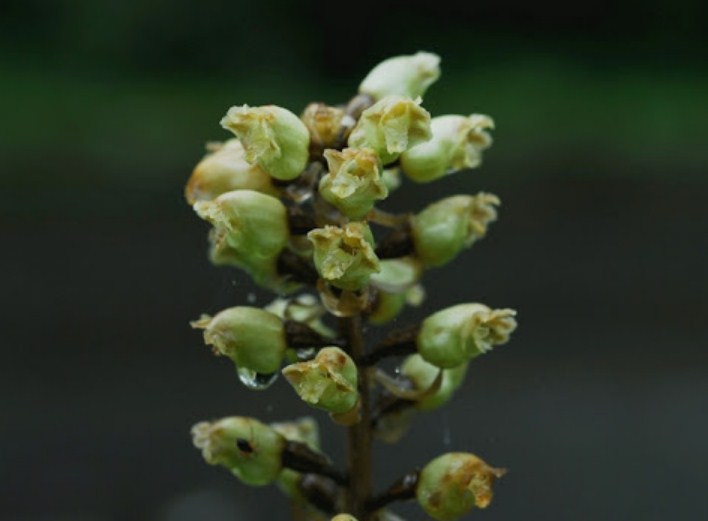
Beauty yellow
- If you want to see this plant, go to the Far East, the Caucasus or Eastern Siberia. Beauty yellow is characterized by large flowers, which have a rich yellow tint. The flowers, in shape, resemble a funnel.
- There are no leaves on the stems of Beauty Yellow. The average height of the bush is 30-70 cm. This plant is actively used in traditional medicine, because it helps to cure any skin damage.
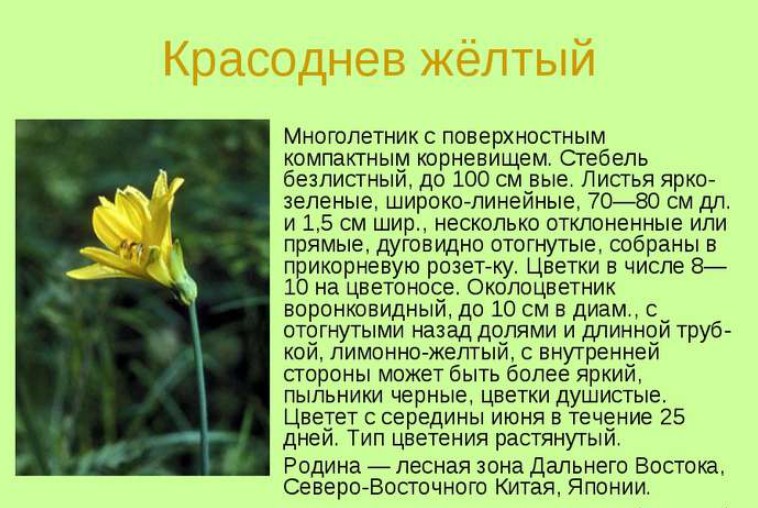
Sternbergia Colchicoma
- This plant grows in the Stavropol and Krasnodar Territory. It can also be seen in the Chechen Republic.
- The height of the grassy perennial - 9 cm. The bulb has an oblong shape. Its diameter is about 1.5 cm, and the length is 2 cm.

Eremosparton Skeys
- The range of Eremosparton of the Silitary - Astrakhan Region, North Caspian and Krasnoyarsk Territory. A branch-type shrub reaches a height of 40-100 cm. The shoots on which there are no leaves are characterized by a twisted structure.
- Caudex with roots with a rod structure is formed underground. Seeds that resemble beans easily spread by the wind.
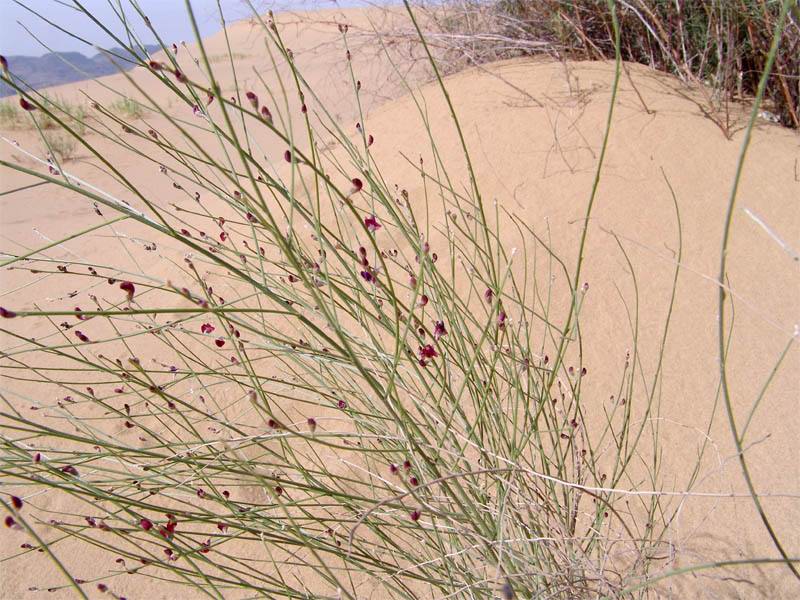
In addition to plants from the Red Book, we advise you to read about the endangered animals in our new article - Animals of the Red Book of Russia and the World
As you can see, in the Red Book of Russia a large number of plants. Some of them disappeared completely, while others are on the verge of extinction. It is important to be more careful about nature. After all, it depends on a person whether it will be possible to preserve disappearing species.

